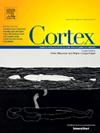走神和动态思维的神经基础:药物和脑刺激的研究
IF 3.3
2区 心理学
Q1 BEHAVIORAL SCIENCES
引用次数: 0
摘要
走神对我们日常生活的影响从降低生产力到促进创造力和解决问题。有证据表明,不同的内部思维类型可以通过经颅直流电刺激(tDCS)来调节,尽管对最佳刺激参数或这种影响背后的机制知之甚少。此外,最近的研究结果表明,多巴胺可用性的变化可能会改变tDCS对神经和行为结果的影响。多巴胺能功能也涉及与走神(如注意力和工作记忆)不相关的执行过程,然而,涉及内部思想的神经化学机制在很大程度上是未知的。在这里,我们研究了多巴胺和tDCS在内部思维过程中的作用。具体来说,我们使用注意控制任务,测试多巴胺可用性(左旋多巴或安慰剂)是否介导了在线高清tDCS (HD-tDCS;2毫安,或假)。没有证据证明我们假设的左前额叶皮层HD-tDCS减少任务无关思维或自由活动思维的影响。未能复制以前的HD-tDCS研究结果强调了在该领域采用强有力的方法实践以提高对研究结果的信心的重要性。然而,我们确实发现,与安慰剂相比,左旋多巴减少了自由移动的思维。我们还发现初步证据表明,多巴胺的可用性可能会缓和在任务无关思维期间刺激和行为变异性表现之间的关系。总的来说,这些发现表明,刺激不会影响动态的内部思维,然而,有初步证据表明,以多巴胺能系统为目标,在减少自发的内部思维和改善行为表现方面可能有效。本文章由计算机程序翻译,如有差异,请以英文原文为准。
On the neural substrates of mind wandering and dynamic thought: A drug and brain stimulation study
The impact of mind wandering on our daily lives ranges from diminishing productivity, to facilitating creativity and problem solving. There is evidence that distinct internal thought types can be modulated by transcranial direct current stimulation (tDCS), although little is known about optimal stimulation parameters or the mechanisms behind such effects. In addition, recent findings suggest changes in dopamine availability may alter the effect tDCS has on neural and behavioural outcomes. Dopaminergic functioning has also been implicated in executive processes anticorrelated with mind wandering such as attention and working memory, however the neurochemical mechanisms involved in internal thoughts are largely unknown. Here, we investigated the role of dopamine, and tDCS, on internal thought processes. Specifically, using an attentional control task, we tested whether dopamine availability (levodopa or placebo) mediated the effects of online high definition tDCS (HD-tDCS; 2 mA, or sham). There was no evidence for our hypothesised effect of left prefrontal cortex HD-tDCS reducing task unrelated thought, nor freely moving thought. This failure to replicate previous HD-tDCS findings emphasises the importance of employing robust methodological practices within this field to improve confidence in the findings. However, we did find that levodopa reduced freely moving thought, relative to placebo. We also found preliminary evidence that dopamine availability may moderate the relationship between stimulation and behavioural variability performance during periods of task unrelated thought. Overall, these findings suggest that stimulation does not affect dynamic internal thought, however there is initial evidence for the potential effectiveness of targeting the dopaminergic system to reduce spontaneous internal thoughts and improve behavioural performance.
求助全文
通过发布文献求助,成功后即可免费获取论文全文。
去求助
来源期刊

Cortex
医学-行为科学
CiteScore
7.00
自引率
5.60%
发文量
250
审稿时长
74 days
期刊介绍:
CORTEX is an international journal devoted to the study of cognition and of the relationship between the nervous system and mental processes, particularly as these are reflected in the behaviour of patients with acquired brain lesions, normal volunteers, children with typical and atypical development, and in the activation of brain regions and systems as recorded by functional neuroimaging techniques. It was founded in 1964 by Ennio De Renzi.
 求助内容:
求助内容: 应助结果提醒方式:
应助结果提醒方式:


